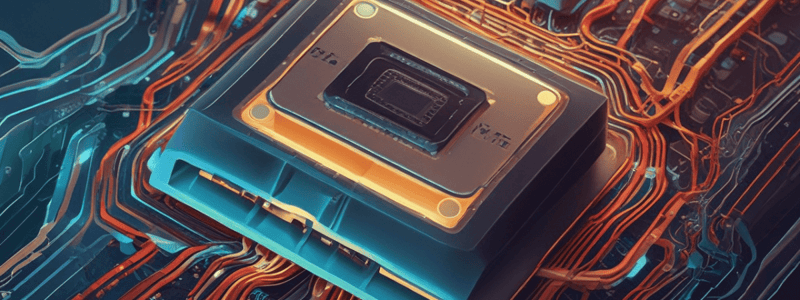Podcast
Questions and Answers
What is the primary reason why BJTs have been largely replaced by other devices?
What is the primary reason why BJTs have been largely replaced by other devices?
- They cannot block negative collector-emitter voltages.
- They have high power loss during turn-on and turn-off.
- They have low current gain compared to signal amplifiers. (correct)
- They have low voltage withstanding capability.
What is the purpose of connecting a diode in series with the collector of a BJT?
What is the purpose of connecting a diode in series with the collector of a BJT?
- To increase the current gain of the BJT.
- To block positive collector-emitter voltages.
- To block negative collector-emitter voltages. (correct)
- To decrease the power loss during turn-on and turn-off.
What is the term for the maximum voltage between collector and emitter when the BJT is in the cutoff region?
What is the term for the maximum voltage between collector and emitter when the BJT is in the cutoff region?
- VEBO
- VCC max
- VCE saturation
- VCEO (correct)
What is the result of the second breakdown in a BJT?
What is the result of the second breakdown in a BJT?
What is the characteristic of a BJT that allows it to emulate an ideal switch?
What is the characteristic of a BJT that allows it to emulate an ideal switch?
What type of device is a BJT classified as?
What type of device is a BJT classified as?
Flashcards are hidden until you start studying
Study Notes
Power BJT Characteristics
- BJT is the first Switching Control Semiconductor Device (SCSD) to allow full control.
- Its construction and operating characteristics differ significantly from signal BJT due to voltage and current ratings requirements.
- In the cutoff region, the collector current is almost zero, and the maximum voltage between collector and emitter is denoted by VCEO (the rated voltage).
Operating Conditions
- To emulate an ideal switch, the base current in the on-state must be high enough for the operating point to lie on the hard saturation line associated with the lowest voltage drop across the device.
- Power transistors have very small reverse voltage withstanding capability.
Limitations
- BJTs cannot block negative collector–emitter voltages.
- To block negative voltage, a diode is connected in series with the collector.
Failure Modes
- Second breakdown occurs when both the collector–emitter voltage and the collector current are high, resulting in high power loss and local hot spots in the semiconductor.
- The current density increases in hot spots, leading to damage.
Key Features
- Current-Controlled Device
- Low current gain compared to signal amplifiers (typically 10)
Studying That Suits You
Use AI to generate personalized quizzes and flashcards to suit your learning preferences.




